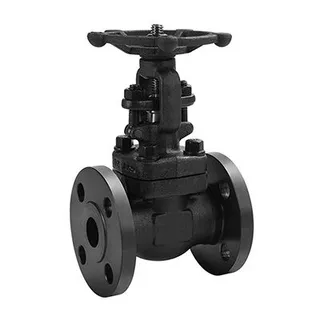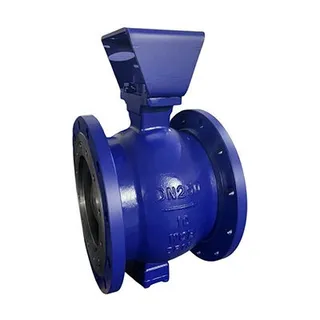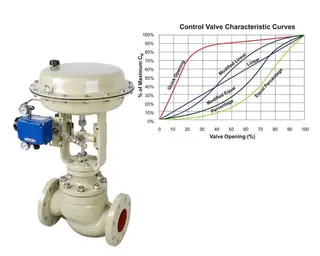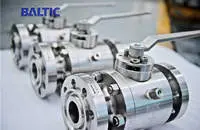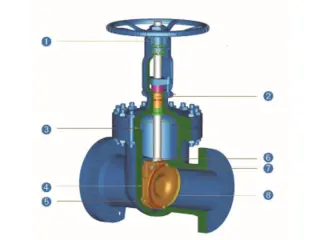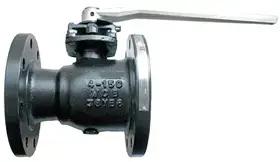Features of Duplex Stainless Steel Valves
Duplex stainless steel valves are designed to leverage the unique characteristics of a two-phase structure, which combines the properties of both ferritic and austenitic stainless steels. By carefully controlling the chemical composition and heat treatment process, duplex stainless steel valves achieve a combination of excellent toughness, weldability, high strength, and exceptional resistance to chloride stress corrosion. These advantages make duplex stainless steel valves an ideal choice for demanding applications, enabling them to develop rapidly as a popular weldable structural material in the industry.
Performance Characteristics of Duplex Stainless Steel Valves
Duplex stainless steel valves offer a unique combination of strength, corrosion resistance, and mechanical performance due to their dual-phase microstructure. Below are their key performance characteristics.
1. Chloride Stress Corrosion Resistance
Duplex stainless steel valves, especially those containing molybdenum, exhibit superior chloride stress corrosion resistance under low-stress conditions. In contrast, austenitic stainless steel valves, such as the commonly used 18-8 grade, are prone to stress corrosion fractures in neutral chloride solutions at temperatures above 60°C. This vulnerability is especially noticeable in environments with trace amounts of chloride and hydrogen sulfide, such as heat exchangers and evaporators. Duplex stainless steel valves offer much better resistance, making them highly suitable for these harsh conditions.
2. Pitting Corrosion Resistance
Duplex stainless steel valves also offer excellent resistance to pitting corrosion. Their pitting resistance equivalent (PRE) is calculated as CR% + 3.3Mo% + 16N%, and their critical pitting potential is similar to that of austenitic stainless steel. The corrosion resistance of duplex stainless steel valves is comparable to that of AISI 316L. For high-chromium duplex valves containing 25% chromium, particularly with nitrogen additions, the pitting and crevice corrosion resistance exceeds that of AISI 316L.
3. Corrosion Fatigue and Wear Resistance
These valves demonstrate strong corrosion fatigue and wear resistance, especially in the presence of certain corrosive media. This makes duplex stainless steel ideal for applications like water pumps, valves, and other power equipment that must endure both mechanical stress and corrosive environments.
4. Mechanical Properties
Duplex stainless steel valves offer a compelling combination of high strength and fatigue strength. Their yield strength is approximately twice that of 18-8 austenitic stainless steel, while their elongation in a solid solution state reaches 25%. Additionally, the toughness value (AK) is more than 100J, making these valves suitable for applications requiring durability and resistance to mechanical stress.
5. Weldability
One of the standout features of duplex stainless steel valves is their excellent weldability. These valves exhibit a low tendency for hot cracking, and welding typically does not require preheating or post-weld heat treatment. Furthermore, duplex valves can be welded to 18-8 austenitic stainless steel or carbon steel, offering versatility in joining materials.
6. Hot Working Characteristics
The hot working temperature range of duplex stainless steel valves, particularly those with lower chromium content (around 18% Cr), is wider than that of 18-8 austenitic stainless steel, making the material easier to process. Duplex stainless steel can be rolled directly into steel plates without the need for forging. High-chromium duplex stainless steel (25% Cr) is slightly more difficult to hot work but can still be used to produce plates, pipes, and wires.
7. Cold Working Characteristics
Duplex stainless steel valves exhibit a stronger work hardening effect than 18-8 austenitic stainless steel. In the initial stages of deformation, large stress is required to shape pipes and plates, which enhances the material's strength and durability.
8. Thermal Conductivity and Expansion
Duplex stainless steel valves offer superior thermal conductivity and a lower linear expansion coefficient compared to austenitic stainless steel. These properties make duplex valves ideal for use in heat exchanger tube cores and other applications where heat exchange efficiency is crucial.
9. Limitations in High-Temperature Applications
High-chromium ferritic stainless steel, a component of duplex alloys, exhibits some brittleness at temperatures above 300°C. However, the lower the chromium content in duplex stainless steel valves, the less harmful the brittle phase becomes, improving their suitability for higher-temperature applications.
Conclusion
Duplex stainless steel valves combine the best attributes of both ferritic and austenitic stainless steels, offering outstanding performance in a wide range of challenging environments. Their superior resistance to chloride stress corrosion, excellent mechanical properties, and good weldability make them an ideal choice for demanding applications, particularly in industries such as chemical processing, power generation, and marine environments.
Send your message to this supplier
Related Articles from the Supplier
Features of Duplex Stainless Steel Valves
- Dec 14, 2024
Features of Bolted Bonnet Gate Valves
- Dec 14, 2024
Features and Installation of V-type ball valve
- Dec 14, 2024
Lift Plug Valves: Structure, Types and Features
- Feb 28, 2025
Features Of Pneumatic Flange Gate Valve
- Dec 14, 2024
Flow Characteristics of Control Valves
- Oct 14, 2025
Classification Of Ball Valves
- May 03, 2018
Classification Of Check Valves
- Dec 14, 2024
Related Articles from China Manufacturers
Duplex Stainless Steel Ball Valves
- Dec 20, 2021
Stainless Steel Valves
- Sep 07, 2022
Trim Numbers of Valves
- Feb 28, 2023
Features of Stainless Steel Pneumatic Ball Valves
- Apr 28, 2022
Features of precision carbon steel pipes
- Sep 26, 2023
Features of Stainless Steel 3-way Ball Valves
- Aug 29, 2022
Different Kinds of Stainless Steel Valves
- Sep 09, 2022
Exploring the Versatility of Slab Gate Valves
- Dec 12, 2023
Related Products Mentioned in the Article
Zhejiang Kosen Valve Co., Ltd.
- https://www.kosenvalve.com/
- Address: Dongou Industrial Zone, Oubei, Wenzhou, Zhejiang, China
- Phone: 86 577 5798 7171
- Business Type: Industry & Trading, Manufacturer,
Supplier Website
Source: https://www.kosenvalve.com/features-of-duplex-stainless-steel-valves.html


